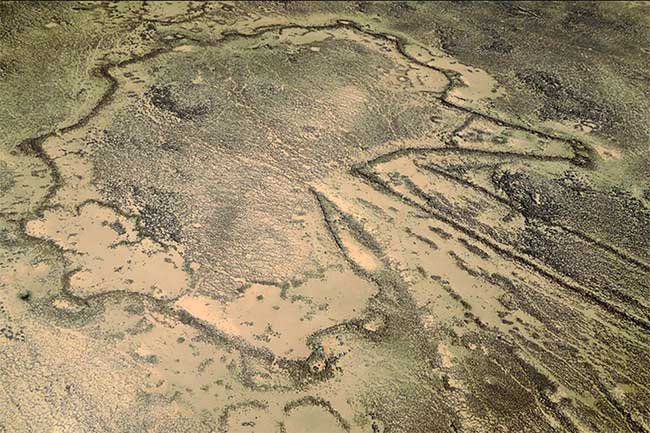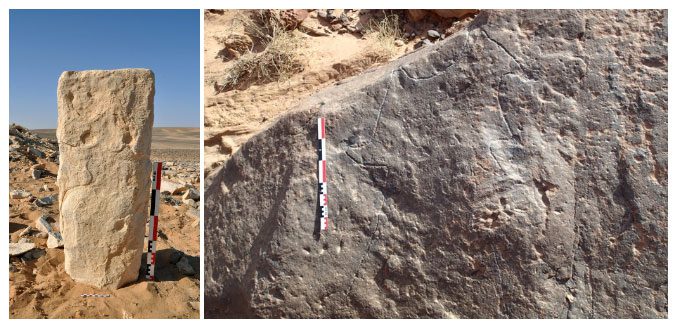The carvings discovered in Saudi Arabia and Jordan appear to correspond with the ancient giant stone traps nearby, referred to as “desert kites” due to their shape when viewed from above.
Archaeologists working in Saudi Arabia and Jordan have reported the discovery of the oldest known structural map, according to CNN.

The hunting traps resemble kites when viewed from above. (Photo: O. Barge/CNRS).
A new study published on May 17 in the scientific journal PLOS One reveals that “extremely precise descriptions” of the details of the giant trap structures were carved into stone slabs.
These structures were used to trap wildlife, such as gazelles, herding them into areas where entire groups could be slaughtered.
Stone Age hunting traps date back approximately 9,000 years and take on a kite-like shape when viewed from above.
The accurate drawings of the “desert kites” indicate that ancient builders and users of these traps had advanced and sophisticated knowledge of spatial awareness and could process complex spatial information.
“From a cognitive development standpoint, this is quite remarkable,” said archaeologist Wael Abu Azizeh.
Previously, archaeologists reported the discovery of two carved stones found in 2015 in Jordan and Saudi Arabia.
Mr. Abu Azizeh, a team member, discovered one of these at an ancient settlement in the Jibal al-Khashabiyeh region of Jordan, where there are eight stone traps.
He shared that “in a matter of seconds,” he recognized the markings made on an 80cm long slab, believed to be 7,000 years old, representing a nearby giant stone trap.
“I thought of the idea of the nearby ‘desert kites’, and it came very suddenly, very quickly,” Abu Azizeh said.

The carved stone discovered in Saudi Arabia and Jordan. (Photo: SEBAP & Crassard et al)
His colleagues in Saudi Arabia excavated a larger carved stone in the Jebel az-Zilliyat region, measuring nearly 4 meters long. The slab depicts two different stone traps located just 120 meters apart. The carving is believed to date back 8,000 years.
The study shows that the shapes, layouts, and proportions of the carvings align with the actual remains of the giant stone traps today.
“The carvings are authentic and remarkably accurate, furthermore, they are on a large scale,” according to the study.
The carving found in Saudi Arabia was created to a scale of approximately 1:175, meaning the actual stone trap is 175 times larger than the carving.
These ancient traps were first discovered in the Middle Eastern desert in the 1920s by pilots flying over the area.
The gathering walls, which extend hundreds of meters to 5 kilometers, help herd animals toward a large pen surrounded by several pits that can be up to 4 meters deep.
There is limited information about the people who constructed these stone traps. They may represent a significant endeavor involving collective effort. The stone traps, sometimes organized in chains, would allow communities to hunt large numbers of animals simultaneously.


















































